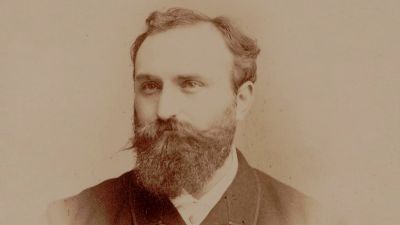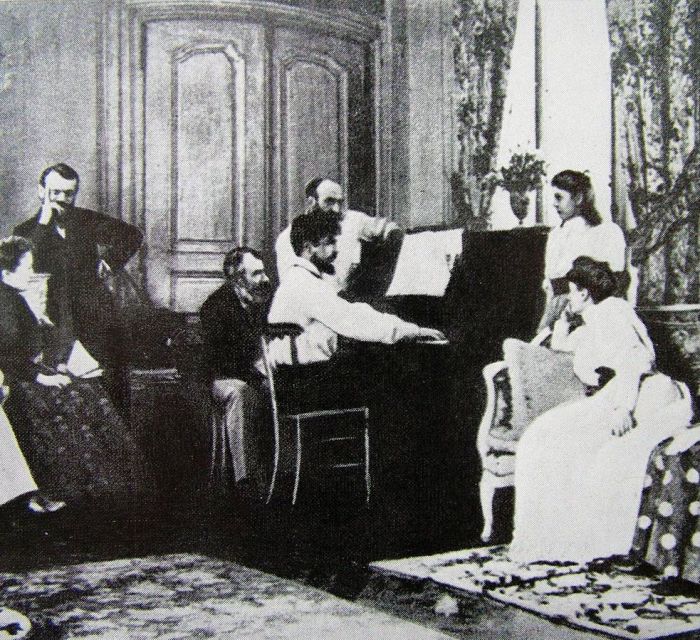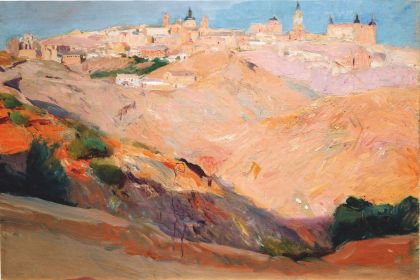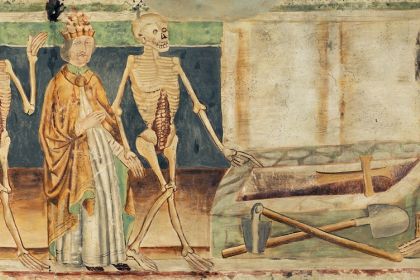Violin
Ernest Chausson as the first promoter of nascent impressionism

Ernest Chausson
Ernest Chausson was a composer who, despite his rather humble body of work, still played a crucial role in the history of French music, specifically defining the era of late Romanticism. In his posting as a secretary of the Société Nationale de Musique, he contributed to the important work of helping young composers present their music to the public. It is believed that he not only reconciled the opposing musical groups of Paris that represented different generations of composers but also contributed to the promotion of innovative ideas of nascent impressionism by encouraging the talents of Claude Debussy and Erik Satie.
Born into an extremely affluent bourgeois family, Ernest Chausson studied law at the insistence of his father, but by the age of twenty-five, he completely lost interest in this profession although he finished his studies with a doctor's degree and a received a prestigious position in the trade. Realizing his true inclinations, he plunged head-on into the world of music, starting his intensive education in the field of composition at the Paris Conservatory and taking private lessons from prominent teachers of his time.
His solid financial support, sociable easy temper, and wide connections in the higher circles of Paris influenced the rapid growth of Ernest Chausson's popularity in the musical and artistic elite of France. He traveled extensively throughout Europe attending major premieres while his brilliant art salon was a place where composers, writers, and artists from different countries met.
A significant role in the life and work of Ernest Chausson was put onto his acquaintance and friendly relations with two young composers who determined the musical image of France for the next quarter-century. The composers' names were Claude Debussy and Eric Satie.
The friendship between Debussy and Chausson fell on particularly difficult years in the life of the impressionist composer as he found himself in a kind of isolation due to his constant conflicts with academic teachers who refuted his innovative composer methods.
Debussy performs Mussorgsky's opera Boris Godunov in Chausson's salon:


The relationship between the two composers is well illustrated by their joint study of the work of Modest Moussorgsky who was famously adored by Debussy. Aware of his friend's interest, Chausson ordered the score of the opera Boris Godunov so that Debussy could spend many hours at the piano while Chausson turned the pages.
As secretary of the Société Nationale de Musique, Chausson signed Gymnopédies written by Erik Satie for the performance at the salle Érard in 1897. These works were orchestrated by Debussy and became the first and only instance of Erik Satie's music being performed by a symphony orchestra for at least 20 years.
The orchestra conductor recalled that during the premiere he saw tears slip down the cheeks of a smiling Satie. Apparently, this performance can be considered the birth of the ambient genre, since it was Erik Satie's Gymnopédies that prompted Brian Eno to create the iconic Ambient 1: Music for Airports a hundred years later.
As a composer, Ernest Chausson left only 39 opuses since his tragic death at the age of 44 caught him at the height of his creative period. Mostly his music belongs to chamber vocal genres with the exception of four fully orchestral works of which the most famous is Poème for violin and orchestra.
Listen to Ernest Chausson's Poème for violin and orchestra performed by Yehudi Menuhin with Paris Symphony Orchestra:
Ernest Chausson died tragically and senselessly while riding a bicycle on his estate. He accelerated too much on the downhill slope and crashed into a brick wall, dying on the spot.



